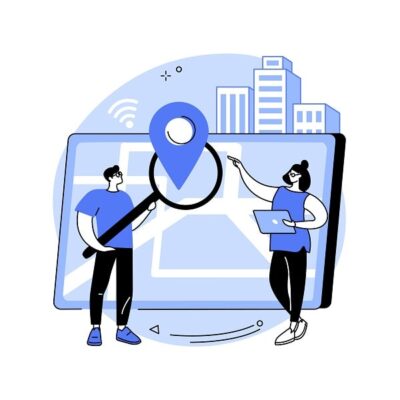Search engine optimization is a holistic approach to improving a business’s online web presence. But while we believe SEO is one of the best ways to bring in new business and retain the customers you’ve already secured, it’s not the only tool you should use.
At Boostability, we talk a lot about the digital marketing journey. There are certain things a business will need to have before we can start, and things a business will need to do once SEO is implemented. While digital marketing efforts never real stop, they do evolve over time. Here’s where SEO fits into that evolutionary process.
Before SEO: Building the Basics
Before you can implement SEO on a website, your clients will need a few things in place first. Here’s what they are.
1. A Targeted Business Plan
Good SEO requires knowing what search terms customers are using. That requires knowing who customers are in the first place. A business plan will help with that.
A business plan answers a few essential questions, like
- What problem am I trying to solve?
- What niche in the market am I trying to fill?
- How can I support the needs of my market?
Business plans can take lots of different forms, but having an idea of what your clients want to do and how they think they’ll do it.
2. A Website with Actionable Content
Having a website seems like a no-brainer, and we’ll agree with that. (We even build websites ourselves!) But having a website with actionable content? That’s the real ticket.
We’ve talked about actionable content before, but here’s the gist. Every website has content—blog posts, “About Us” pages, contact information—but not all of it is actionable. Actionable content encourages a site’s user to do something, like
- Fill out a form
- Share an email or a phone number
- Schedule an appointment
- Watch a live-demo
The kind of targeted business plan we talked about in the last section can help determine which of these objectives your clients would like to target (or if there’s another that would be even better). Deciding on this will inform SEO experts when they help your customers with the next step.
3. Keyword Research
Keyword research is at the heart of SEO. Knowing which keywords to target is a culmination of knowing what kinds of people your small business clients are trying to target and what they want them to accomplish.
We’ve talked at length about the keyword research process. For an in-depth look at how it works, check out this blog post and this webinar.
During SEO: Finding The Dynamic Duos
When SEO implementation really kicks off, you’ll need to pair it with a few other approaches. SEO works hand in hand with these, making efforts on multiple fronts more likely to be successful.
1. Reputation Management
Reputation management ensures your clients have a solid online review system that showcases their best features. Most online consumers don’t trust companies who can’t prove they’re good at what they do. Online reputation management provides the social proof a mostly digital world demands.
Check out this article for more information about how reputation management and SEO work together.
2. PPC Campaigns
PPC and SEO campaigns are different in the way they work and how much you’ll spend on them. While we’re big believers that the long-game is the best game, PPC can be a valuable addition to your SEO implementation process.
We’ve written about how the two should work together in this article.
3. Social Media
Social media efforts are a staple for modern businesses, but optimizing your SEO on sites that also have search features can be a critical component to your general campaign. As we’ve written about in the past, sites like Amazon, YouTube, and Facebook all have search features for which you can optimize your content. Don’t forget these sites while you’re targeting Google at the same time.
After SEO: Maintaining the Lead
SEO is a continual maintenance process. Simply implementing keywords, creating copy, and running a link building campaign isn’t enough (although it sure sounds like it could be). Here’s what you’ll need.
1. New Keywords to Target
A common question you’ll get from clients is, “What happens after my selected keywords reach page one?” It’s a great question, and the answer is simple: “You start with new ones.”
Boostability’s keyword research specialists start by selecting what we call “buying keywords,” or keywords that indicate a user is ready to make a purchase. They’re the easiest to target because the traffic is relatively low, but the intent to buy is high. Once we’ve targeted those keywords and gotten them to the first page, we start targeting higher traffic keywords that usually have a less likely chance of leading to a purchase. They’re higher up in the conversion funnel, which means more people use them. This also usually means that it can take a little longer to reach page one for this tier of keywords.
This process continues with higher-ranking levels of keywords. Old keywords also need additional maintenance as traffic patterns change. Explaining this process to your customers is key to ensuring their SEO process works how it should.
2. New Actionable Content
Some pages of a website will stay pretty much the same for long periods of time, like the contact page and company history. But there are other portions of a website that will need to change or be updated.
A blog is the best way to publish this content on a regular basis. Your clients will need to take industry standards into account when they decide what their schedule will be. They should ask themselves questions like
- When does my industry experience seasonality?
- How often do my customers use my website?
- How frequently do I need to communicate with my customers?
Based on their answers to these questions, they should create a schedule to update their site with new actionable content accordingly. Social media is also a great way to do this.
3. New Customers to Find
Once you’ve established how you’ll find the customers you initially targeted, your clients can expand their reach to consumers in adjacent markets. This will require additional keyword research and an understanding of the product your client is trying to share, so ensure they understand how the SEO process really works before beginning again.
X Marks the Spot
The great thing about SEO is that the goalposts are always moving as your business grows. When you reach a milestone—like ranking on the first page of Google, or getting a particular amount of traffic over a certain period of time—there are new challenges to tackle. Modern digital marketing shouldn’t simply be about making the next sale. Its vision has to be bigger than that—that’s why SEO is so important.
If you’re looking to offer top-notch SEO to your small business clients at a price they can afford, join the Boostablility Partner Program. We’ve helped over 100,000 small businesses across the globe establish their presence online and start getting found by the people who matter. Connect with us to learn more about the opportunities we have in store for you.










